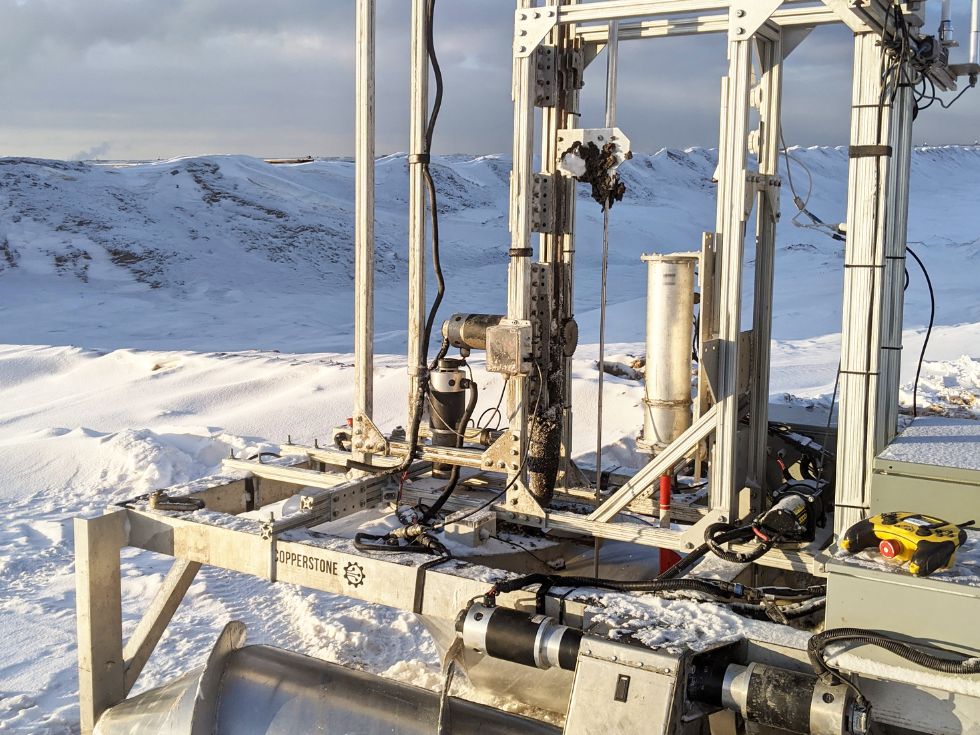Shear strength is a key measure indicating the resistance or earth to erosion and it can be measured by several methods, either in-situ, or through laboratory testing. One of the most reliable and accurate methods is to use the Vane Shear Testing method. This method relies on a Vane Shear tool, or vane, and it looks like a thin metal rod with four orthogonal metal fins. The vane is equipped with a sensor and when deployed it measures the shear strength by detecting the rotational force needed to overcome the shear strength of the soil. Shear strength tests are particularly valuable in mining sites as the data is needed to derive soil bearing capacity, design retaining walls, or to evaluate the stability of slopes and embankments. These tests are often done manually and calibration is carefully performed to ensure accuracy and precision of the test results.
Copperstone uses a proprietary Automatic Vane Shear Tool (AVST) for in-situ testing that is made to be deployed from HELIX robots. The unit and operating methods are in accordance with ASTM D2573. The unit consists of a rugged drive and sensing unit that rotates the vanes at precisely controlled speeds while measuring the position and applied torque. The drive unit is mounted to the top of HELIX AR2’s payload deployment rack. Vane extension rods connect the drive unit to the vanes. These rods are encapsulated in rod sleeves with sealed bearings at each end to reduce friction with the surrounding soil at depth. In some cases, a slip coupler is installed just above the vane to allow approximately 15-20 degrees of rotation before the soil is engaged; this can be used to estimate the friction of the system. The AVST is instrumented with inclinometers, temperature and humidity sensors. Copperstone uses off-the-shelf vanes in several sizes to allow a wide range of materials to be tested.
